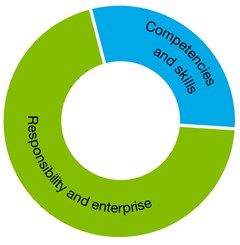Explore content
Typically, by the end of Year 6, students:
Identify and clarify information and ideas
identify and clarify relevant information and prioritise ideas
Organise and process information
analyse, condense and combine relevant information from multiple sources
Apply logic and reasoning
assess whether there is adequate reasoning and evidence to justify a claim, conclusion or outcome
Typically, by the end of Year 6, students:
Pose questions
pose questions to clarify and interpret information and probe for causes and consequences
Imagine possibilities and connect ideas
combine ideas in a variety of ways and from a range of sources to create new possibilities
Consider alternatives
identify situations where current approaches do not work, challenge existing ideas and generate alternative solutions
Seek solutions and put ideas into action
assess and test options to identify the most effective solution and to put ideas into action
Transfer knowledge into new contexts
apply knowledge gained from one context to another unrelated context and identify new meaning
Draw conclusions and design a course of action
scrutinise ideas or concepts, test conclusions and modify actions when designing a course of action
Evaluate procedures and outcomes
evaluate the effectiveness of ideas, products, performances, methods and courses of action against given criteria


